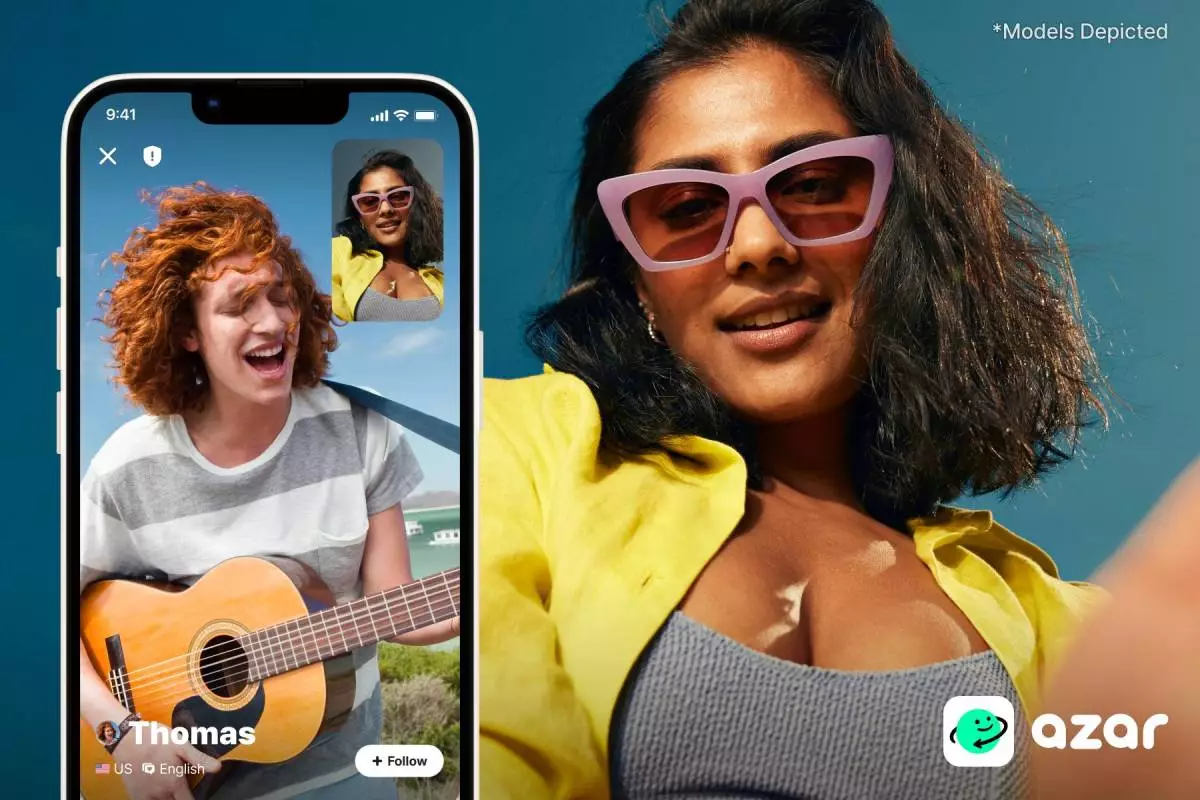In a world dominated by social media connectivity, Azar has emerged as a standout application, boasting over 100 billion video chats that connect strangers around the world. Developed by Hyperconnect, a company acquired by Match Group—which also owns popular dating apps such as Tinder, Hinge, and OkCupid—Azar enters the U.S. market amidst a myriad of challenges. Unlike traditional dating apps, Azar’s primary function is to facilitate random video chats, a concept that raises eyebrows in a landscape scarred by the misbehavior of past random video platforms.
For many millennials, platforms like Omegle and Chatroulette serve as both nostalgic memories and cautionary tales. These platforms became synonymous with unwanted exposures and encounters with lewd behavior, making users wary of any application that suggests random video interactions. Omegle’s closure following a substantial lawsuit related to sex trafficking exemplifies the dangers associated with unmoderated platforms, while Chatroulette’s portrayal in popular culture reinforces its less-than-stellar reputation as a “haven for sexual predators.”
For Azar, this challenging backdrop presents both an obstacle and an opportunity. It caters primarily to a younger, more adventurous demographic that does not have the same context as their predecessors. Gen Z users, who grew up in a different digital environment, are less scarred by these earlier iterations and more inclined to embrace the spontaneity Azar offers.
Azar sets itself apart by implementing a multifaceted moderation system combining both AI technology and human oversight. According to CEO Linda Kim, the app employs automated tools to initially identify inappropriate content—be it visual, auditory, or textual—before escalating issues to human moderators for further evaluation. This dual-layered protection is a significant selling point when attempting to assuage safety concerns that potential users might harbor about random video chats.
Kim’s leadership is particularly vital in this context. Since moving from the U.S. to Seoul to spearhead Azar, her past experiences with notable technology firms such as Apple and Zynga have undoubtedly informed her approach to product management and user safety. By leveraging her expertise, she is keen to ensure that Azar does not fall prey to the same pitfalls that have befallen its predecessors.
Unlike many social platforms predominantly converging around visuals or text, Azar focuses on fostering real-time interactions that often transcend language barriers. The app not only allows users to connect based on gender and location preferences but also employs real-time translation features to facilitate communication amongst diverse users. As Kim notes, the app particularly appeals to Gen Z, who actively seek spontaneous interactions and shared experiences.
However, the user experience is not without its quirks. Kim has noted instances where younger users have playfully commented on her age, revealing a culture where users genuinely wish to socialize and engage authentically. This sense of randomness, however, is both a strength and a potential weakness of Azar; while spontaneity can lead to genuine connections, it can also result in uncomfortable encounters if moderation measures aren’t foolproof.
Azar’s relevance becomes even more pronounced when considering the growing concern of loneliness among younger generations. The connection crisis manifests in myriad forms, and platforms like Azar aim to provide a temporary remedy. By facilitating conversation and connection, the application seeks to alleviate feelings of isolation, echoing sentiments shared by mental health professionals about addressing the loneliness epidemic.
As the global pandemic further propelled digital interactions, applications catering to spontaneous communication likely resonate deeper than before. However, while the intention might be noble, Azar must remain vigilant regarding user safety, carefully navigating the balance between connection and discomfort.
While Azar aims to take root in the U.S. market, the path forward is undeniably rigorous. The lingering skepticism surrounding random video chat apps necessitates ongoing investments in security and user education. As Kim asserts, the safety of users lies at the core of their mission. By prioritizing these efforts and continually adapting to user feedback, Azar can carve a niche in a market that has historically hesitated to embrace its concept.
Azar stands at a crossroads, channeling the hopes of a connectivity-hungry generation while also wrestling with the reputational baggage of random video conversations. If successful, it may just redefine how spontaneous interactions are perceived in a digital age characterized by both connection and caution.

